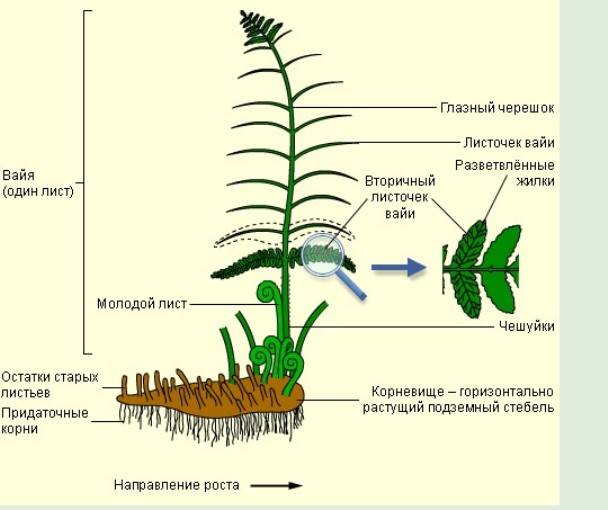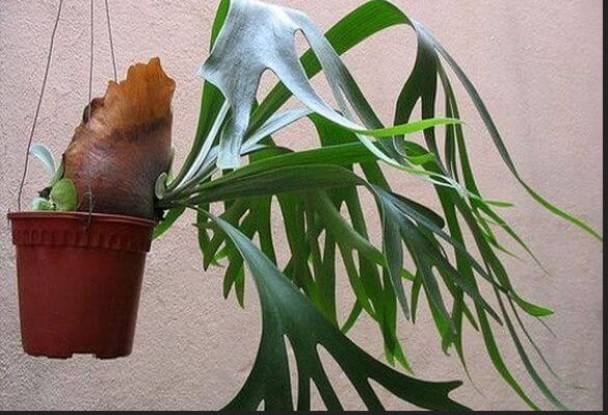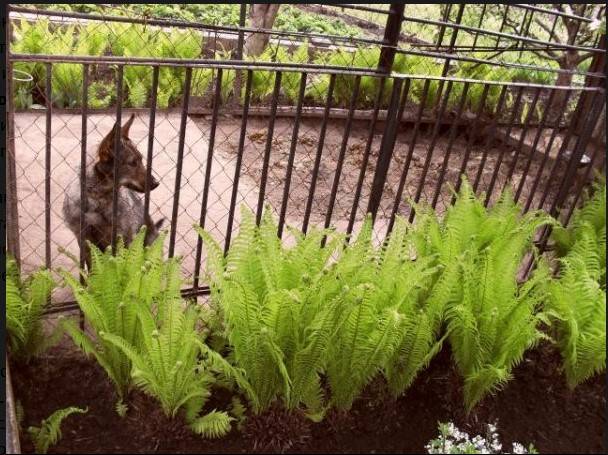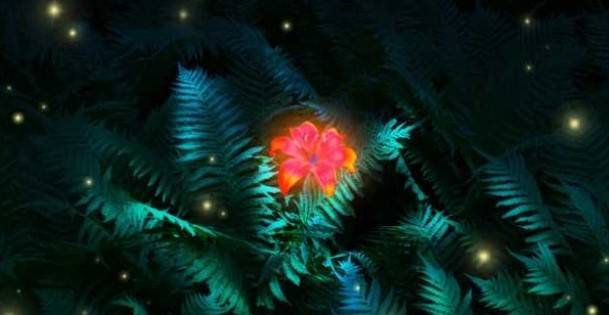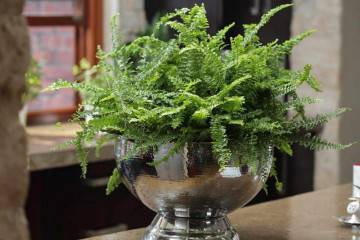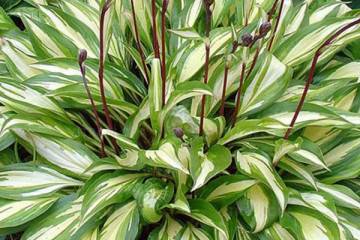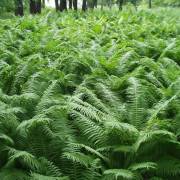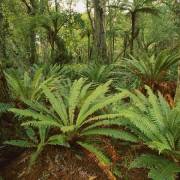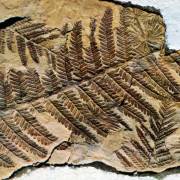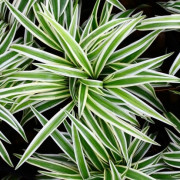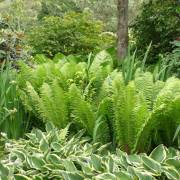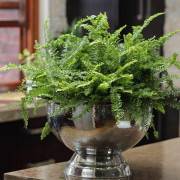Fern species and their classification
Content:
Ferns are a kind of gymnosperms, the same age as dinosaurs. The finds of fossils of leaves date back to the Devonian period, which is separated from the present time by hundreds of millions of years. During this time, the size of the culture has decreased significantly. Today there are about 10 thousand species. Now this plant can be found in the wild and on the windowsills of apartments. It looks like a miniature indoor shrub with small leaves.
Fern - what is this plant
It is a deciduous perennial plant that can range in size from 3-5 cm to several meters in height. Due to its good survival rate and powerful rhizome, the plant can grow on different soils, in forests, in swamps, in sands, on the ground and on tree trunks.
For a long period of evolution, the fern plant has not acquired full-fledged leaves. A leaf-like flat branch that grows out of the ground is called a frond. It consists of a petiole and flat small segments in the form of leaves extending from it. The frond was transformed as a result of species survival, these are flat shoots modified from ancestral plants.
The formation of a flatter shape on the surface of the branches led to the activation of photosynthesis and their better survival. In tropical zones, the length of an annual frond can reach several meters; in temperate climates, shoots grow up to 1.5 m. Also, spores ripen at the flat on the underside of the leaves, with the help of which the plant reproduces.
The stems of fern crops do not have a cambial layer that builds up wood, therefore the aboveground part of the plant has a short life period and is periodically replaced by new shoots.
The tissues of the flower contain substances useful for humans: vitamins, alkaloids, flavonoids, essential oils, minerals, trace elements. Infusions and decoctions are made from raw materials, which are used to treat rheumatism, lowering temperature, and healing wounds.
The fern is a plant that plays an important role in the biology of the planet. It serves as a habitat and food for many species of birds, animals, insects. Stems with a large leaf area produce a significant amount of oxygen necessary for the life of living organisms.
The main types of ferns
Of those species that were able to survive evolution, 5 main ones remained with different definitions of traits.
- Uzhovnikovye. A species with an unusual structure for the fern family. It is small in size, one fleshy leaf, rarely two. One bush can grow for several decades. In the Middle Lane, the snakes rarely reach more than 20 cm.
- Marattievye. Found in tropical forests, subject to extinction. They have a small stem, up to 1 m, and a bunch of leaves at the apex up to 6 m long. On the reverse side of the leaf, sporangia ripen, which contain many spores. Falling to the ground, the spores germinate in the form of small shoots, similar to forest ferns from the temperate strip.
- Real ferns.This is the most common class of ferns, and are herbaceous and arboreal. Their representatives can be found in deserts, forests, tropics, mountains. In the temperate climate zone, in shaded areas of the forest and along the banks of rivers, such varieties of real ferns grow as brittle bladderwort, common ostrich, male scabbard, female cochinate, common bracken.
- Marsiliaceae and Salviniaceae. This is the aquatic classification of the fern, representatives of the group grow in warm lakes in Africa, America, Asia. They have a large root part and miniature deciduous. Marsilia species are often referred to as aquatic clover because of the similarity in leaf shape. This species is popular for decorating aquariums and custom bouquets.
Plant life cycle
The life cycle of a flower consists of sexual and asexual periods, which alternately replace each other, for which the fern needs spore-bearing and fertilizing shoots, they have differences in structure. Sporophyte - more understandable to everyone, as a green leaf-shaped stem, is asexual. On its underside, sporangia ripen, which contain spores for plant propagation. They look like small dark tubercles on the leaves - sporophylls.
From thousands of spores that have fallen to the ground, a gametophyte grows - a small rounded sprout, which is characterized by its small size, up to 6 mm. In it, the genitals develop - male (antheridia) and female (archegonia). After maturation, male sex cells fertilize female cells. A new sporophyte grows from the embryo, which will give new spores for the continuation of the plant's life.
Fern breeding methods
This representative of the flora is interesting in that it reproduces by spores that are on the lower part of the leaves. The fern never blooms because it doesn't need seeds.
At home, the plant is propagated by dividing the bushes. To do this, the overgrown fern with roots is carefully taken out of the pot, the growth point is found and they try to separate the bunch of stems with a good lump of roots. The seedling is placed in prepared soil and watered abundantly. The soil for planting a sprout should consist of peat, sand and light earth in equal proportions.
To know everything about fern breeding, it is important to add that the culture has the ability to reproduce perfectly by roots. To do this, you need not to uproot the young growth for several years. After some time, the bushes of this plant will populate all the free space in the garden.
General growing tips
The fern family loves frequent watering and irrigation of the leaf part with a spray bottle. It is better to put the pot in a shaded place, the soil should be slightly acidic, loose with a good drainage layer. It is important to observe the temperature regime from 18 ° С to 25 ° С. The bushes are vulnerable to attack by insecticide-fighting scale insects. The culture is fed with an organic fertilizer solution during the period of active growth. In winter, watering should be reduced and fertilized until spring.
For home cultivation, perennials from the davalliev genus are suitable, for example, the varieties fern Mnogoryadnik, Nephrolepsis, Asplenium, Oleniy horn.
Economic use of ferns
The woody species of this shrub are used for construction purposes. The root system and dead stems of ferns are involved in the formation of peat. The leafy part of the plant is used to prepare a green fertilizer that is rich in nitrogen.
From the remains of ancient plants, coal was formed, which is used as a heating material and raw material for chemical production.Ferns of various types and names have been used by people for a long time as a folk remedy for the treatment of ailments. The common ostrich, the male thyme is used as an anthelmintic to treat a sore throat.
In the Black Sea region, young fern shoots are harvested on an industrial scale. Then the raw material is poisoned to Japan, Korea, China, where the plant is eaten after heat treatment. In the same place, starch is obtained from the fern root and used in the production of glue and beer, added to baked goods.
Use of fern for decorative purposes
Ferns of the family Multicore have a high decorative characteristic and are widely used in landscape design. The female kochedzhnik is a gorgeous bush of tall stems, which is used to decorate areas in single and group plantings.
Curly branches of ferns complement the bouquets. Bright green colors will refresh familiar roses, chrysanthemums, gerberas. Artificial reservoirs are decorated with aquatic varieties of plants, aquariums are planted.
Indoors, bushes can be placed on windowsills, ampelous forms are hung in a flowerpot on the wall or placed on a stand.
Fern in mythology
Culture occupies a special place in Slavic mythology. The ancients believed that whoever finds a fern flower on the night of Ivan Kupala will find happiness and wealth. The legend had such a strong influence that it was carried over to Christianity.
In old England, residents believed that the plant protects the house from lightning, they hung the stems on the walls to protect the dwelling from destructive bad weather.
In Russia, it was believed that the forest variety bracken fern protects a person from evil spirits and witches, they carried a branch of a plant with them as a talisman. The seeds of the tree helped to find treasures and made a person invisible. But for the seed to become magical, it was necessary to collect it on the night of Ivan Kupala after the supposed flowering.
The first ferns originated many millions of years ago, were able to outlast dinosaurs, underwent evolution and adapted to different habitats. Due to its plasticity to living conditions, the culture can be found on the tops of mountains with depleted soils, the eternal moisture of swamps, and arid sandy areas. The appearance of the plant can be characterized by different types of aerial parts, depending on the variety. These are gorgeous palm trees and a small water clover. The variety of forms and unpretentious care allow us to conclude that the fern is a plant that rightfully deserves the attention of gardeners and amateur flower growers. Today the fern is a frequent visitor on the windowsill of the apartment, in the corridors of public buildings, an element of decor in the garden.


